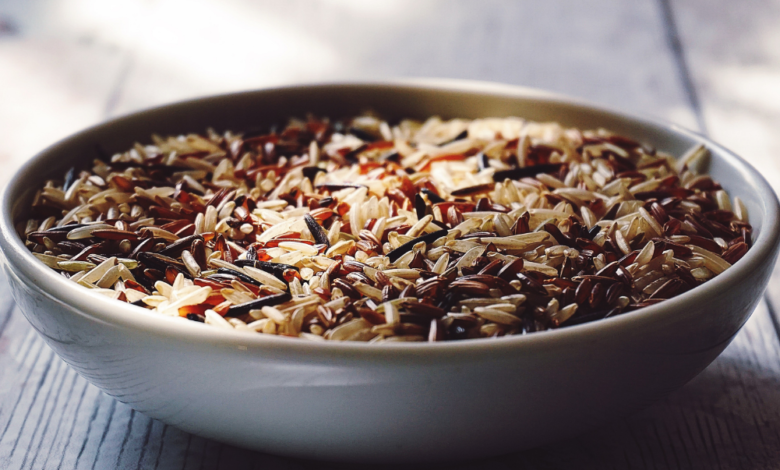Discovering Emşi: The Ancient Grain Dish That’s Making a Comeback

Emşi is an ancient grain dish that’s been enjoyed by many cultures for centuries. This traditional food is made by fermenting grains like barley, millet, and wheat, which gives it a unique taste and texture. If you’ve never tried it before, you’re in for a treat!
The magic of it comes from its special fermentation process. This process not only changes the flavor but also makes the dish very nutritious. People have been making it for ages, and it’s still a big part of celebrations and traditions today.
What is Emşi? A Simple Guide
Emşi is a special kind of food made from grains that are fermented. This means the grains like barley, millet, or wheat are left to change over time so they taste different. It’s not just any food; it’s a part of many traditions and has been enjoyed for a long time.
When grains are turned into it , they develop a unique flavor and texture. Some people say it’s tangy, while others think it’s a bit sweet. This makes it a fun and interesting dish to try, especially if you like new flavors.
It’s also a very nutritious dish. Because of the fermentation, Emşi is packed with good stuff that helps keep you healthy. So, not only does it taste good, but it’s also good for you.
How Emşi is Made: The Fermentation Process Explained
Making Emşi involves a special process called fermentation. This is where grains are left to change over a period of time. It’s like letting dough rise, but for grains. The grains start out one way and end up with a whole new taste.
First, the grains are soaked in water. Then, they are left in a warm place to start fermenting. This can take a few days, depending on how strong you want the flavor to be. The longer they ferment, the stronger the taste.
After fermentation, the grains are usually cooked or prepared in a specific way. This step makes the it ready to eat. You’ll find that every family or region might have its own way of preparing it, which makes it even more interesting to explore.
The Health Benefits of Eating Emşi
Eating Emşi is not only tasty but also very healthy. Because of the fermentation process, it is easier for your body to digest. This means your stomach will feel good after eating it, and you get more nutrients from the grains.
Fermentation also helps to boost the vitamins and minerals in it . This can be great for your bones and overall health. Plus, it is often rich in fiber, which is important for keeping your digestive system running smoothly.
Some people also believe that it can help with certain health issues, like boosting your immune system. It’s a good way to get some extra good stuff into your diet while enjoying a delicious dish.
Different Ways to Prepare Emşi Around the World
Emşi is made in many different ways depending on where you are. In some places, people let the grains ferment for a long time to get a stronger flavor. In other places, they might ferment it for a shorter time for a milder taste.
The way it is cooked can also vary. Some people might make it into a soup or stew, while others might use it as a side dish or a main course. Each region has its special twist on how it is prepared, making it a fun dish to learn about.
Different places also use different grains and spices to make it unique. This means you can find lots of different flavors and styles, depending on where you are in the world. Trying it from different regions can be a tasty adventure.
How to Make Emşi at Home: A Step-by-Step Recipe
Making Emşi at home is a fun and simple project. Start by soaking your grains in water. This helps them get ready for fermentation. Then, let them sit in a warm spot for a few days.
After the grains have fermented, they need to be cooked. You can do this by boiling or steaming them, depending on how you like your it . Make sure to check the taste and texture as you go, so it turns out just right.
Finally, you can add any extra flavors you like. Some people put in herbs or spices to give their Emşi a special touch. Enjoy your homemade it as a tasty dish that’s also good for you.
Why Emşi is Important in Cultural Celebrations
Emşi is more than just food; it’s a part of many cultural celebrations. In some places, people make it for special festivals or family gatherings. It’s a way to bring people together and celebrate important times.
Often, it is shared as a sign of hospitality and friendship. When you’re invited to eat it , it’s a way of showing that you’re welcomed and valued. It’s also a dish that’s tied to many traditions and stories.
In some cultures, it is made during specific times of the year or during religious events. This makes it not just a meal, but a part of important rituals and celebrations.
The History of Emşi: Where Did It All Start
The history of Emşi goes back a long time. It’s been made and enjoyed by many people throughout history. Different regions have their own stories about how it was first made and why it became important.
Over the years, it has changed and adapted. While the basic idea of fermenting grains has stayed the same, each culture has added its own special touches. This history makes it a unique and interesting dish to learn about.
Looking at how it has evolved can give us a better understanding of different cultures and traditions. It’s a great example of how food can tell stories about the past and bring people together.
Emşi Variations: How Different Regions Make It
Emşi is not the same everywhere. Different regions have their own ways of making it, which makes each version unique. For example, some places use barley, while others might use millet or wheat.
The flavors and textures can also vary a lot. Some regions make it with a strong, tangy taste, while others keep it milder and sweeter. These variations reflect local tastes and ingredients.
Trying it from different regions can be a fun way to explore different cultures. Each version has its own special twist, and you might find a favorite among the many styles.
Tasting Emşi: What Does It Really Taste Like
When you try Emşi, you might notice it has a unique flavor. The taste can be tangy, a bit sweet, or even a mix of different flavors. This is because of the fermentation process, which changes the grains’ original taste.
The texture of it can also be different depending on how it’s made. It might be soft and chewy or a bit crunchy. This variety makes tasting it an interesting experience, as you get to explore different sensations.
Every bite of it can offer a new taste experience. It’s a dish that’s not just about eating but also about enjoying the unique flavors and textures it has to offer.
Emşi vs. Other Fermented Foods: What Makes It Unique
Emşi is one of many fermented foods, but it has its own special qualities. Unlike some other fermented dishes, it is made from grains and has a distinctive taste and texture.
Fermented foods like yogurt or kimchi have their own flavors, but it stands out because of its use of grains and the way it’s prepared. This makes it a unique addition to any meal or celebration.
Comparing it to other fermented foods can show how different ingredients and processes lead to different tastes and benefits. Each type of fermented food offers something special, and Emşi is a great example of this diversity.
The Best Ingredients for Making Delicious Emşi
To make the best Emşi, start with high-quality grains. Barley, millet, and wheat are common choices, but make sure they are fresh and good for fermentation. The better the grains, the better the final dish will be.
Adding spices and herbs can also enhance the flavor of it . Some recipes might include garlic, ginger, or other seasonings to give it an extra kick. Experimenting with different ingredients can help you find the perfect taste.
Finally, pay attention to the fermentation process. This step is crucial for developing the right flavor and texture. By following the steps carefully and using the best ingredients, you can make it that’s both delicious and nutritious.
Emşi in Modern Times: Is It Still Popular Today
Even though Emşi is an ancient dish, it’s still enjoyed by many people today. In modern times, it has found its way into different kitchens and continues to be a part of various celebrations and meals.
People today might make it at home or find it in specialty stores. It’s a dish that fits into modern diets and can be enjoyed in new and exciting ways. Many people appreciate it for its unique taste and health benefits.
The popularity of it shows that traditional foods can still have a place in our modern lives. It’s a great example of how old recipes can stay relevant and continue to be loved by new generations.
Emşi and Its Connection to Traditional Festivals
Emşi holds a special place in many traditional festivals and celebrations. During these events, it’s often served to symbolize togetherness and joy. In some cultures, making and sharing it is part of the festivities, bringing people closer and honoring long-standing traditions.
For many families, preparing it for these occasions involves special recipes and methods passed down through generations. The process of making it can become a family event in itself, involving everyone from the youngest to the oldest members.
Serving Emşi during festivals is not just about the food; it’s about connecting with heritage and celebrating shared history. This tradition helps to keep cultural practices alive and allows people to experience the richness of their cultural roots.
The Science Behind Fermentation in Emşi
Fermentation is the key to what makes Emşi so unique. It’s a natural process where microorganisms break down the sugars in grains, transforming them into different compounds. This process gives it its distinctive taste and enhances its nutritional value.
The fermentation process creates beneficial bacteria, which can improve digestion and boost the immune system. It also makes the nutrients in the grains more accessible to your body. This scientific magic turns simple grains into a powerhouse of flavor and health benefits.
Understanding the science behind fermentation can make you appreciate it even more. It’s fascinating to see how tiny microorganisms can change the flavor, texture, and health benefits of food in such a significant way.
Emşi in Different Cultures: A Global Perspective
Emşi is enjoyed in various cultures around the world, each adding its own twist. In some places, it’s a staple food, while in others, it’s reserved for special occasions. This global perspective shows how it has traveled and adapted over time.
Different cultures use different grains and spices in their it recipes, which influences the taste and texture. For example, in one region, it might be spicy, while in another, it might be sweet and mild. This diversity highlights how it fits into many different culinary traditions.
Exploring Emşi in different cultures can be a delightful journey. It’s an opportunity to taste how various ingredients and preparation methods create unique versions of the dish, reflecting the local flavors and customs.
Tips for Storing and Preserving Emşi
Properly storing Emşi is important to keep it fresh and tasty. Once prepared, it should be kept in an airtight container to prevent it from drying out or absorbing other odors. Keeping it in a cool place can also help maintain its quality.
If you have leftover it , you can freeze it for later use. This helps preserve its flavor and texture, making it easy to enjoy at another time. Just make sure to thaw it properly before reheating.
Preserving it correctly ensures that you get the most out of this delicious dish. With the right storage methods, you can enjoy it for longer and keep its unique taste and benefits intact.
How Emşi Fits Into a Modern Diet
In today’s diet, Emşi can be a great addition for those looking for variety and nutrition. Its unique fermentation process makes it a good source of probiotics, which are beneficial for gut health. Including Emşi in your meals can offer a tasty and healthful alternative to more common foods.
Modern recipes often adapt traditional dishes like Emşi to fit contemporary tastes. You might find Emşi used in new and creative ways, from soups to salads, making it versatile and easy to incorporate into various meals.
Emşi fits well into a balanced diet, offering both flavor and nutrition. As more people explore traditional foods, Emşi is gaining popularity as a delicious and healthy option in modern cooking.
Emşi and Its Role in Sustainable Eating
Emşi is also an example of sustainable eating. By using grains that are locally available, it supports regional agriculture and reduces the need for imported ingredients. Fermentation can also help preserve food, reducing waste.
The process of making Emşi involves simple, natural ingredients and methods. This makes it a great choice for those looking to eat more sustainably and reduce their environmental footprint.
Choosing Emşi as part of your diet supports sustainable practices and connects you to traditional ways of eating. It’s a delicious way to enjoy food that is good for you and the planet.
Emşi’s Role in Community and Family Bonding
Making and sharing Emşi is a wonderful way to bring family and friends together. The process of preparing this dish can become a communal activity, where everyone contributes to making a special meal.
In many cultures, Emşi is more than just food; it’s a way to strengthen relationships and celebrate important moments. Whether it’s during a holiday or a family gathering, Emşi helps create lasting memories.
Sharing Emşi with others can build a sense of community and connection. It’s a dish that fosters togetherness and allows people to enjoy both good food and good company.
Conclusion
Emşi is a special and tasty dish that brings a lot of history and culture to the table. It’s made from fermented grains like barley or millet, which gives it a unique flavor and texture. Whether you try it at a festival or make it at home, Emşi offers a delicious way to explore traditional foods.
Not only does Emşi taste great, but it’s also good for you. The fermentation process makes the grains easier to digest and adds extra nutrients. By enjoying Emşi, you’re connecting with a long history of people who have loved this dish for centuries.



